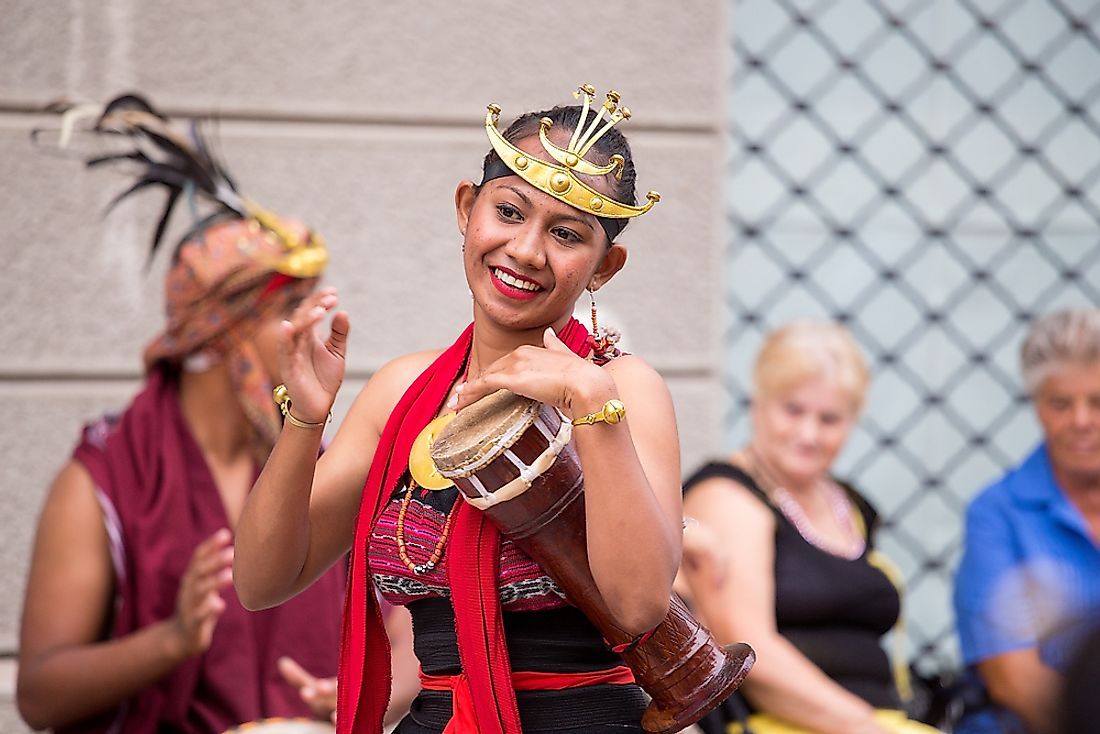Ethnic Groups of Timor-Leste

Timor-Leste, also known as East Timor, is a sovereign state in Maritime Southeast Asia. It occupies the eastern half of Timor Island, the islands of Jaco and Atauro, and the Oecusse enclave. The western half of Timor Island is Indonesian territory. Timor-Leste was a Portuguese colony from the sixteenth colony until its independence on November 26, 1975. A week later, Indonesia invaded the new state and declared it the 27th province. The occupation sparked a violent conflict between the Indonesian military and the separatists. Between 1997 and 1998, the United Nations successfully negotiated a ceasefire, and Timor-Leste became the first new state of the 21st century. It joined the United Nations in 2002. East Timor is one of the only two countries in Southeast Asia that are predominantly Christian, the other being the Philippines. It is also the only state in Asia that is wholly in the Southern Hemisphere.
Demographics Of Timor-Leste
As of 2019, the population of East Timor was estimated at 1.3 million, a significant rise compared to 860,000 in 2000. The Tetum (100,000) are the largest Malayo-Polynesian group and are mainly found around the capital, Dili, and the north coast. The Mambai (82,000) inhabit the central mountains, while the Tukudede (64,000) are found around Liquiçá and Maubara. Other Maloyo-Polynesian ethnic groups include the Galoli, Kemak, and the Baikeno. The largest ethnic group of Papuan origin are the Bunak (85,000), Fataluku (45,000) the Makasae (75,000). There is also a significant population of Mestiço (a mixed-race of Portuguese and East Timorese). The non-native population consists of immigrants from China, Indonesia, and the neighboring Asian countries.Tetum and Portuguese are the two official languages of East Timor, though Indonesian and English are widely spoken. About 37% of the population speaks Tetum as a first language, while 13% speaks Mambai. Other native languages include Makasai, Tetum Terik, Baikenu, Kemak, and Bunak.
The Chinese In Timor-Leste
Chinese interest in the Island of Timor began as early as the 10th century but peaked after the invention of the steamship. Thousands of Chinese immigrants fled to the island while fleeing the Manchu emperors. By the early 20th century, the Chinese community was well organized, owning houses, building temples, and running schools. Prior to the Second World War about 2000 Chinese families lived in Timor-Leste. In 1942, Japan invaded the island and massacred the Chinese and the locals forcing many to migrate back to China and other countries. After the Declaration of Independence in 1975, the Chinese in the country were awarded citizenship, but a majority fled to China after Indonesia occupied East Timor. As of 2018, there were about 6,000 Chinese citizens in the country, half of whom are illegal immigrants but continue to engage in business activities due to the close relationship between the two governments.
Shift In Ethnic Composition
The ethnic composition of the country shifted dramatically after Indonesia withdrew its occupation. While Muslims represented 18% of the population a few years before independence; mainly because Indonesia had transmigrated a large number of Muslims into Timor-Leste to work, many left after independence. Many of the natives and non-natives also fled to other countries fearing persecution from the occupying Indonesian military. Soon after independence, the country faced a shortage of professionals such as doctors and teachers and resorted to importing labor from other countries.







